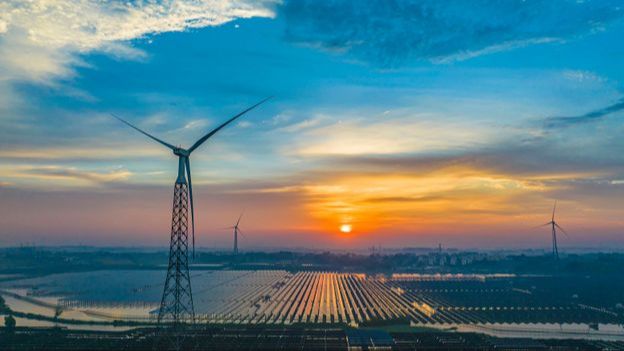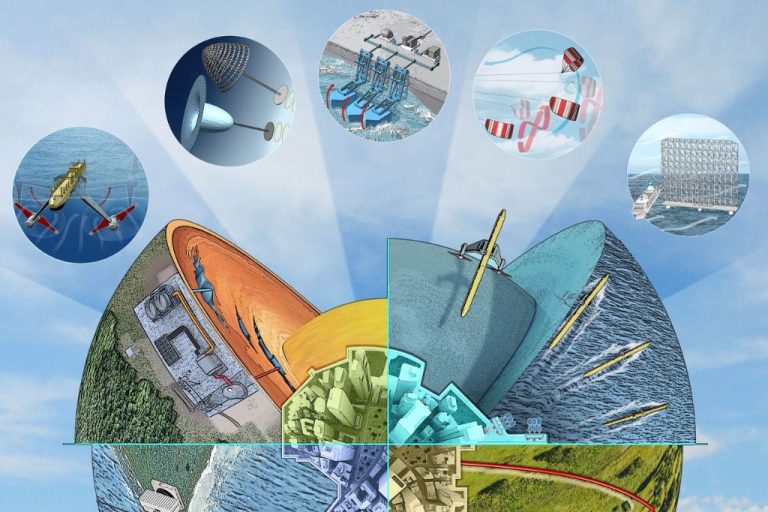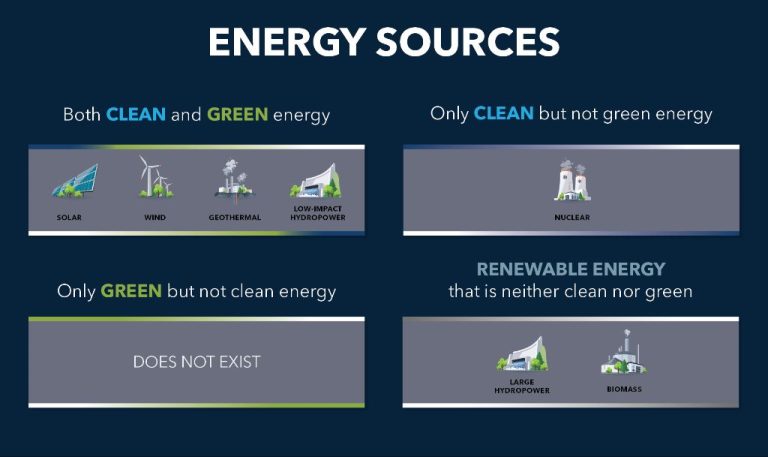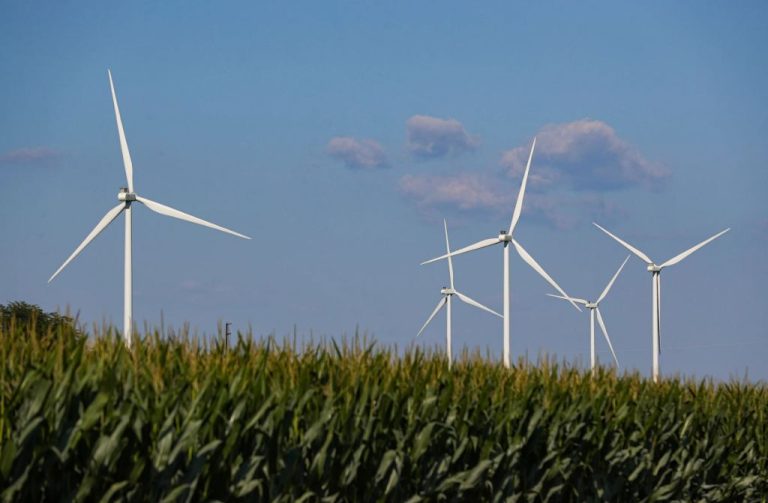How Limitless Green Energy Would Change The World?

Green energy can be defined as energy produced from clean, renewable sources that have minimal negative impact on the environment (https://www.nationalgrid.com/stories/energy-explained/what-is-green-energy). Sources of green energy include wind, solar, geothermal, hydropower and biomass. Green energy matters because it can reduce greenhouse gas emissions and reliance on finite fossil fuels, while also creating jobs and supporting local economies.
The vision of limitless green energy entails meeting 100% of the world’s energy needs through renewable sources like wind and solar. This would dramatically reduce carbon emissions that cause climate change. It would also mean energy independence for all countries and universal access to electricity. With innovation, green energy could become so plentiful and cheap that energy scarcity and costs would no longer limit human development.
Climate Change Mitigation
Green energy, especially from renewable sources like solar, wind, and hydropower, could significantly reduce greenhouse gas emissions and help mitigate climate change. According to the UN, renewable energy could decarbonize 90% of the power sector by 2050, greatly reducing carbon emissions (source). Renewables produce little to no global warming emissions during operation, unlike fossil fuel sources. National Geographic reports that transitioning to low-carbon renewable energy is one of the most effective ways to address climate change (source). The MIT Climate Portal explains that renewables will play a key role in climate change mitigation and the global energy transition away from carbon-intensive sources (source). Increasing renewable energy would directly reduce emissions from electricity generation. It could also enable electrification of transportation and other sectors, providing further emissions reductions.
Cleaner Air
Switching to renewable energy sources like wind and solar power can significantly reduce air pollution from fossil fuels like coal, oil, and natural gas. According to the United Nations, renewable energy helps address climate change as well as air pollution and health impacts (source). Fossil fuel power plants are a major source of fine particulate matter known as PM2.5, which can cause cardiovascular and respiratory disease. Using renewable energy reduces PM2.5 from the power, transportation, and industrial sectors (source). With limitless renewable energy, air pollution from burning fossil fuels could be eliminated, improving respiratory health and preventing millions of premature deaths globally.
Energy Independence
Widespread adoption of renewable energy sources like wind and solar power could help countries achieve greater energy independence and security by reducing reliance on imported fossil fuels (Energy Independence and Security). The US currently imports a small amount of oil and gas from Russia, but expanded domestic clean energy production would provide a buffer against global supply disruptions and price volatility (Clean Energy Is the Key to Real Energy Independence). Investing in renewable energy and electrification would allow countries to source more of their energy needs from domestic resources. While the myth of complete energy independence is unrealistic given global energy markets (The myth of US energy independence), clean energy would still provide greater control over energy security and resilience.
Job Creation
The transition to limitless green energy would likely lead to significant job creation and economic growth. According to the U.S. Department of Energy, the number of jobs in clean energy increased 3.9% in 2022, adding 114,000 jobs and bringing the total to over 4 million in the U.S. alone (DOE Report Finds Clean Energy Jobs Grew in Every State). Globally, renewable energy jobs hit 12.7 million in 2021, with solar energy being the fastest growing sector (Renewable energy jobs hit 12.7 million globally).
Widespread adoption of renewable energy could spur enormous job growth across manufacturing, construction, installation, maintenance, and more. Entirely new industries and jobs we can’t yet envision could also emerge to support limitless green energy production and distribution. This has the potential to offset any job losses in the fossil fuel industry. With the right policies and investments, new green jobs could revitalize economies, especially in rural areas.
Rural Development
Transitioning to renewable energy sources like wind, solar, and geothermal could bring substantial economic benefits to rural communities. The USDA provides several programs aimed at promoting renewable energy development in rural areas, including grants, loans, and loan guarantees through initiatives like the Rural Development Energy Programs and the Rural Energy for America Program.
Increased renewable energy production in rural areas could create new jobs related to construction, operations, and maintenance of renewable facilities. It may also provide new sources of lease income for rural landowners with wind or solar resources. By locating energy production close to the source of renewables like wind and solar, transmission costs can be reduced as well.
Local renewable energy production can help stabilize energy prices in rural areas, protecting communities from volatility in fossil fuel markets. It can also make energy access more reliable through distributed generation. Overall, renewable energy investment tailored to rural regions can facilitate long-term sustainable development.
Lower Energy Costs
Transitioning to renewable energy sources like solar, wind, and hydropower could lead to lower electricity costs for consumers in the long run. While renewable energy systems require large upfront investments, the International Renewable Energy Agency confirms that renewables are now the cheapest form of new electricity generation. Once the infrastructure is in place, the cost of generating renewable electricity is extremely low as there are no fuel costs. This contrasts with fossil fuel plants that require ongoing purchases of coal, oil or gas.
Studies show that bold investments to scale up clean energy and improve efficiency could save the average U.S. household $500 per year through lower energy bills. The UK’s National History Museum also found that transitioning to net zero emissions would save British households £75-170 annually by 2035. While costs are coming down, governments may need to subsidize renewables in the short term to accelerate adoption. But in the long run, renewable energy has the potential to provide electricity at a lower cost than fossil fuels.
Greater Accessibility
Transitioning to renewable energy sources like solar, wind, and geothermal could significantly increase global energy access. According to the International Energy Agency, 760 million people still lack access to electricity today, with the majority located in sub-Saharan Africa and developing Asia (IEA). However, renewable energy technologies are modular and scalable, making them ideal for expanding electrification. The U.S. Department of Energy notes that renewable sources can provide affordable, reliable and sustainable energy to underserved communities (DOE). The Global Environment Facility also highlights how renewables like off-grid and mini-grid solutions can promote energy access in remote areas (GEF). With the right policies, financing and community involvement, limitless green energy could provide electricity to the hundreds of millions lacking it worldwide.
Sustainable Growth
Transitioning to renewable energy sources like solar, wind, and hydropower can enable more sustainable economic growth and development around the world. According to the United Nations, “Ensuring universal access to affordable electricity by 2030 means investing in clean energy sources such as solar, wind and thermal. Expanding infrastructure and upgrading technology to provide clean energy sources in all developing countries is a crucial goal that can both encourage growth and help the environment” (https://www.un.org/sustainabledevelopment/energy/). Renewable energy provides a steady, reliable power source that reduces dependence on finite fossil fuels. This promotes energy security and stability for the long-term growth of businesses, communities, and nations.
Furthermore, green energy projects often create new high-skilled jobs installing and maintaining renewable infrastructure. The UN notes that “technological improvements, as well as effective policies and financing models, are enabling renewable energy sources to be deployed at unprecedented rates across the globe” (https://www.un.org/sustainabledevelopment/energy/). Investing in renewables can stimulate innovation and provide increased access to clean electricity even in remote areas. Overall, transitioning to limitless green energy sources will enable more equitable, resilient, and sustainable development around the world.
Conclusion
In conclusion, the vision of limitless green energy offers enormous potential benefits for our world. Widespread adoption of renewable energy sources like solar, wind and geothermal would help mitigate climate change by reducing greenhouse gas emissions. It would lead to cleaner air quality as we move away from fossil fuels, improving public health. Energy independence would be achieved as every country and community could produce their own renewable power. The transition would create millions of jobs in the clean energy sector, spurring economic growth. Rural and remote areas would gain access to electricity for the first time through distributed generation. Households and businesses would benefit from lower, more stable energy costs in the long run. And renewable energy offers greater accessibility overall, as it’s naturally replenished over time.
To realize this brighter future, we must act urgently to accelerate the renewable energy transition worldwide. Governments need to set ambitious goals and policies like carbon pricing, clean energy standards and public investment. Companies and consumers should invest in solar panels, wind turbines, EVs and energy efficiency upgrades. With determined, collective action and sustained technological progress, we can aspire toward limitless green energy and unlock immense benefits for current and future generations.





